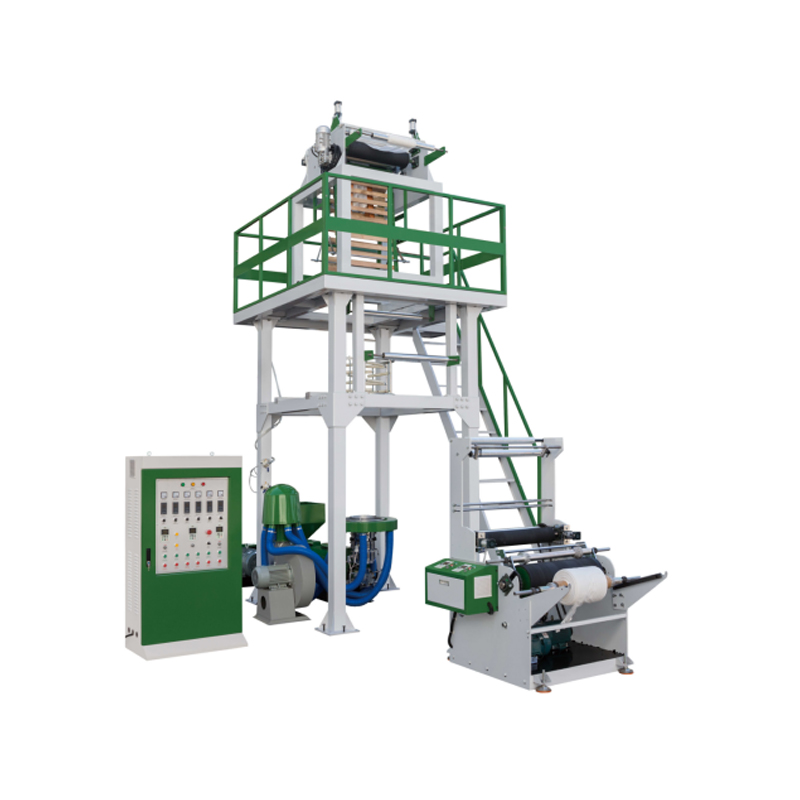High-Speed Blown Film Machines Transforming the Future of Flexible Packaging
 By Admin
By Admin
The flexible packaging industry is witnessing a surge in demand driven by consumer convenience, e-commerce growth, and heightened environmental standards. As manufacturers strive to boost productivity without compromising quality, High-Speed Blown Film Machines have emerged as a cornerstone technology for modern film production.
These next-generation machines are not only redefining efficiency but also setting new benchmarks for output consistency, film strength, and energy consumption. With innovations in design and automation, high-speed blown film systems are becoming indispensable to global manufacturers seeking a competitive edge in today’s fast-paced packaging landscape.
By utilizing high-performance screws, larger die diameters, and optimized air ring technology, these machines achieve faster bubble stabilization and more consistent film thickness, even at higher speeds. This allows for continuous, high-volume production—crucial for meeting large orders and tight lead times in sectors like food packaging, industrial wrapping, and agricultural films.
Automation Meets Precision
A defining feature of modern high-speed blown film machines is their integration with smart automation and digital control systems. Touchscreen HMI (Human-Machine Interface) panels offer real-time monitoring of parameters such as temperature, pressure, and thickness. These machines are equipped with:
Automatic die head rotation
Gravimetric dosing systems
IBC (Internal Bubble Cooling) units
Non-contact thickness measurement systems
This high level of automation not only improves film uniformity but also human error, making operations more reliable and repeatable. As a result, manufacturers experience reduced waste, improved changeover times, and better overall equipment effectiveness (OEE).

Expanding Applications Across Industries
High-speed blown film machines are finding applications across a wide range of industries. Their ability to produce multi-layer films at high speeds makes them ideal for complex packaging requirements. Common applications include:
Food-grade packaging (snack bags, frozen food wraps)
Industrial liners and shrink wrap
Carrier bags and retail sacks
Stretch and barrier films
Agricultural films with UV resistance and water retention properties
With customizable configurations for mono-layer, three-layer, or five-layer co-extrusion, these machines offer flexibility to meet specific mechanical and barrier property requirements demanded by each industry segment.
Sustainability in High-Speed Production
Sustainability is a pressing concern in film manufacturing. Contrary to assumptions, high-speed film machines can enhance eco-efficiency by optimizing material use and reducing energy consumption per unit of film produced.
Advanced models support the use of recycled polyethylene (rPE) and biodegradable polymers, such as PLA and PBAT, without sacrificing performance. Furthermore, thinner films with comparable tensile strength can be produced thanks to precise control and advanced cooling mechanisms. This material down-gauging results in less plastic waste and reduced transportation costs.
In addition, waste recycling systems integrated into the production line allow reprocessing of edge trims and startup scrap, further the environmental footprint.
Market Growth and Regional Trends
The global blown film machinery market is projected to reach USD 1.5 billion by 2028, with high-speed machines contributing significantly to this growth. Asia-Pacific, particularly China and India, is in adoption, driven by rapid industrialization and government initiatives promoting packaging innovation.
European countries are focusing on high-speed systems capable of producing sustainable and recyclable packaging films in compliance with the EU Single-Use Plastics Directive. Meanwhile, North America is witnessing growth in automated blown film lines to meet increasing demand from e-commerce packaging and logistics.
Investment Considerations and Industry Outlook
While high-speed blown film machines require higher upfront investment than standard models, the long-term ROI is substantial. Reduced labor costs, lower waste rates, and greater production volumes translate to better margins and scalability. Equipment manufacturers now offer modular designs, financing plans, and technical support to lower the barrier for small and medium-sized converters.




